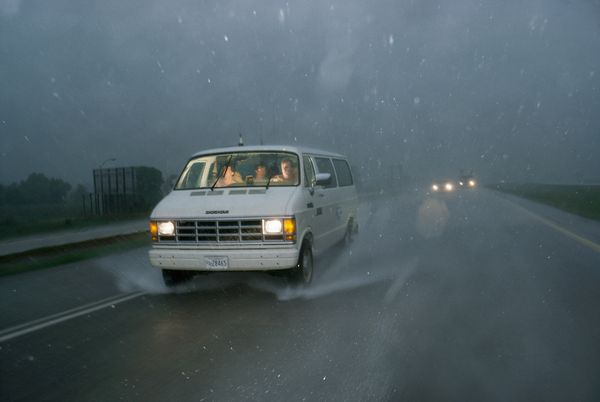Opinion: Chasing Storms Is Dangerous—and Rewarding
A research team pursues a storm in a van.
The death of tornado researcher Tim Samaras, his son Paul, and colleague Carl Young this past Friday near El Reno, Oklahoma, came as a shock to his many friends at National Geographic. It caused us to stop and reflect on the goals and hazards of storm chasing.
Let's face it: Tornado chasing seems like a bad idea when people die. At best it appears reckless. At worst, it feels voyeuristic.
That's why it's important at times like this to make an effort to sort things out. People chase storms for a variety of reasons, from thrill seeking to basic science. Some are out there to capture and sell weather videos. Others are guiding customers on adventure-oriented tours. Still others are government scientists, meteorologists hired by media outlets, or college kids or graduate students associated with university research programs.
When a twister makes news, the images we see on TV are often those captured by storm chasers, which gives us mixed emotions. Watching a vortex rip apart someone's farmhouse is both mesmerizing and horrifying—like watching a car crash. Those feelings are magnified when a tornado devastates a whole town.
It is easy to question the motivations of all storm chasers—especially those who do it for profit. But we should remember that storm chasing has made significant contributions to our understanding of extreme weather. A tornadic storm is a relatively rare event. It is extraordinarily difficult for even experienced meteorologists to know exactly where and when one will occur. Being in the right place to observe one—often by racing ahead of it on dirt roads—is more challenging still.
Only by chasing down a tornado was Tim Samaras able to collect priceless data from inside a funnel. Field observations, high-speed video, and ever-improving radar data have resulted in new insights into tornado dynamics—and more accurate ways to predict them.
Years ago, when Editor in Chief Chris Johns and I followed researchers from the National Severe Storms Laboratory into the field for a National Geographic story, the technology wasn't yet available to give communities reliable tornado warnings more than a few minutes in advance. Today computer models flag potentially dangerous storms as they develop, alert communities in their path, and give residents time to take cover—nearly half an hour in the case of the Moore, Oklahoma, twister.
Does that mean that science is the only worthy reason to chase storms? Not necessarily. There's also something to be gained from observing the phenomenon with your own eyes. Watching a storm moving across a prairie is not that different, in a way, from encountering a bear in a meadow. Both are potentially threatening. But if you keep a safe distance, both can open your eyes to nature's wildness and power.
Tim Samaras knew this. Even as he diligently studied tornadoes in the field, he was also tuned in to their sounds, shapes, and smells. The fact that he lost his life during a storm doesn't mean he'd lost respect for its mystery and danger. It just reminds us how difficult and unforgiving was the science he chose to pursue.
Peter Miller
National Geographic
Published June 4, 2013












